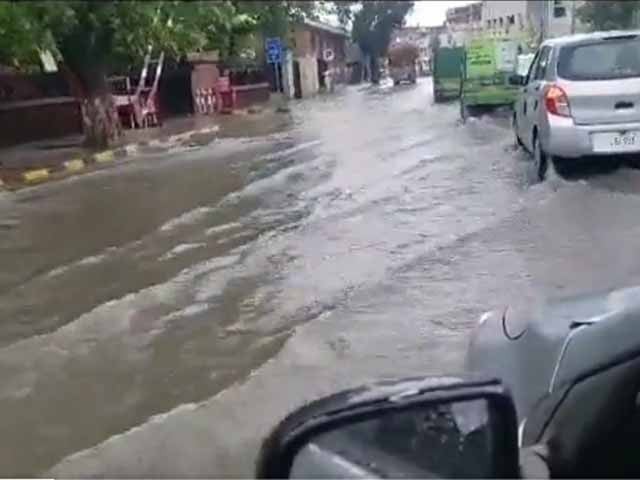Saima Sammar
The widespread monsoon rains that wash over the region are nothing new to Lahore. These rains play an important role for the agriculture and replenishing water supplies. In addition, they also bring number of difficulties and damages to the city. The annual monsoon season, which usually lasts from June to September, is likely to bring severe downpours that cause disastrous flooding, infrastructural damages, health issues and loss of large capital. The last spell that is forecasted to last for the span of a week, can possibly add up to the miseries of the residents in Lahore.
Infrastructure damage caused by flooding
The flooding is one of the most immediate effect caused after persistent rains. In majority of the urban and rural areas of Lahore, the homes and streets get flooded due to outdated old drainage systems and authorities’ inability to handle the floods. Particularly, low-lying neighborhoods risk the most, as in monsoon rains, they turn into transient lakes, evacuate residents, force residents to stay indoors and sustain significant property damages. In rains the announced electricity shutdowns, further restricts daily activities.
Moreover, the heavy rainfall often takes a toll on roads and bridges, causing mayhem in the traffic and disturbances. Deepening of potholes, increases road accidents and blockages.
Health Issues
The Lahore floods, also causes serious health risks by maximizing the dangers of vector-borne diseases like malaria and dengue fever. The stagnant water acts as a breeding ground for disease-carrying mosquitoes. Further, the water contamination, major cause of waterborne diseases poses a serious risk to the public’s health.
The humidity that followed by heavy rain aggravates the respiratory diseases like asthma and raise the risk of fungus infections.
Financial Losses:
These rainfalls, like other climate catastrophes brings a serious dent to the economic activities to the city. Flood waters disrupt operations and destroy items, which disfunction several businesses. Municipal finances come under serious strains, due to infrastructural losses and damages.
Human Suffering and Displacement
Being evicted from one’s home is probably the most painful effect of Lahore’s frequent rains. Families are compelled to escape, abandoning their belongings and seeking safety in temporary shelters or with family. These relocations directly disrupts the academic careers of the students, it also limits the access of vulnerable to healthcare, and brings serious mental sufferings and traumas.
Planning for urban Mitigation
Lahore has to make investments in better urban planning and disaster preparedness strategies to deal with these persistent problems affectively. The authorities must incorporate the initiatives like, retention basin building, infrastructure upkeep, and updated drainage techniques for more efficient rainwater management system. It is crucial to have a thorough plan for managing flooding that takes both immediate and long-term solutions into account.
Programs to raise public awareness about proper garbage disposal and significance of not clogging drains with debris can also help the cause. Residents may also be sensitized to build their houses in a pro-climate manner abd construct more flood-resistant buildings.
Adaptation to Climate Change
Rainfall patterns in Lahore have become increasingly unpredictable and intense, due to the drastic climatic changes in the region. It is essential to adjust to these changes as global temperatures rise. Reforestation initiatives, sustainable urban development, and climate-resilient infrastructure must be taken into account in the province to lessen its vulnerability to extreme weather conditions.
Conclusion
Lahore suffers a wide range of disasters from flooding and infrastructure disruption to health issues and financial losses. The city has to make investments in better urban and infrastructural planning to cope with the needed climate adaption measures.
Proactive measures in building a more prepared and climate resilient Lahore, which becomes able to tackle the climatic problems in the future requires extensive community involvement as well as public education.
#SAIMASAMMARCHRISTANINPAKISTANCJAPMINORITIESINPAKISTAN


